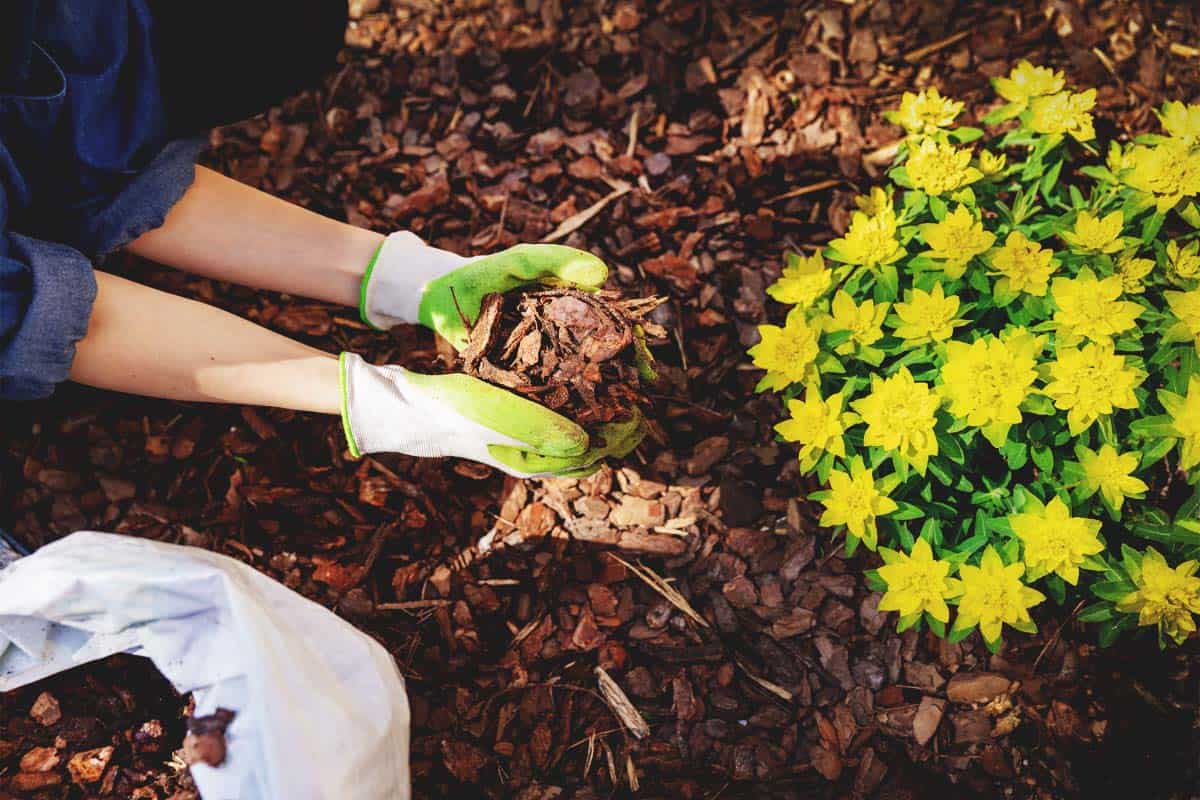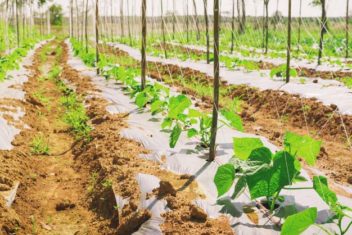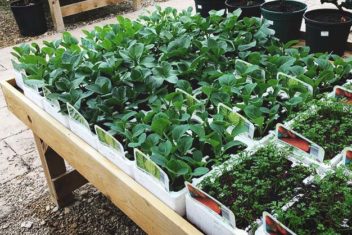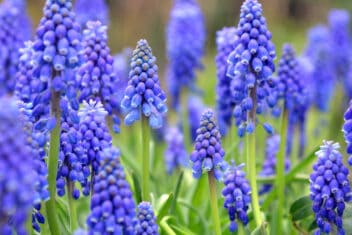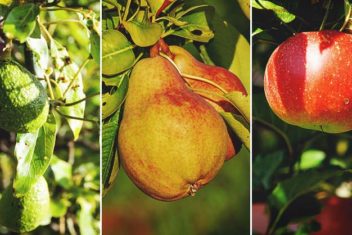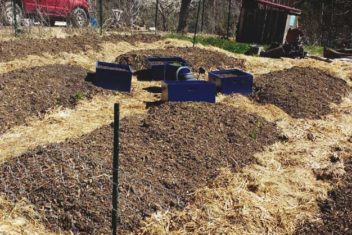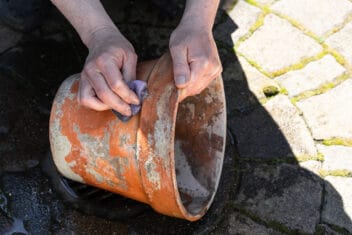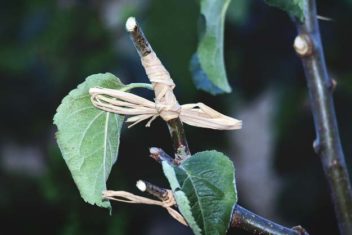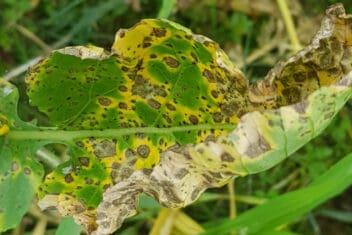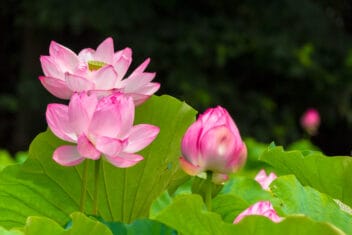Do you live in an area that has freezing temperatures? You should definitely be doing some winter mulching. Winter mulch is different than the stuff you put down during the growing season and the reasons why we apply mulch in the winter differ from spring or summer.
Mulching is an important part of gardening. In the spring, I apply thick layers of mulch to suppress weeds and retain moisture in the soil. Some of my best gardening years were the times when I paid close attention to mulching.
But when plants are dormant, does mulching matter? You might not think that winter mulching is an important task, but it has important purposes in the garden. Let’s take a look at everything you need to know.
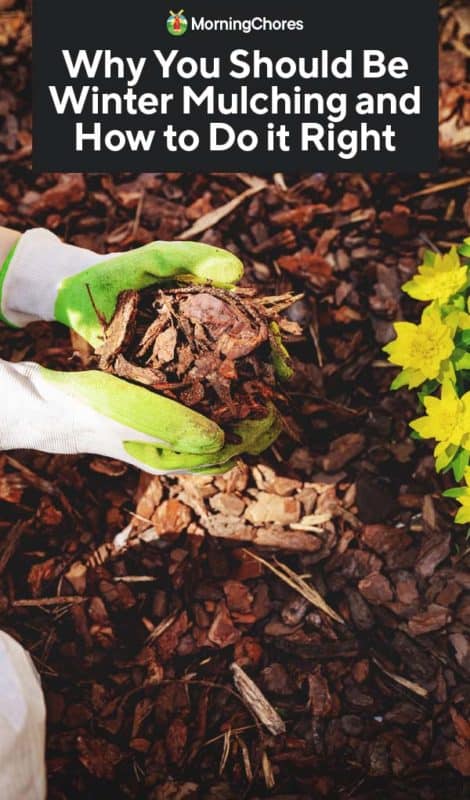
The Reason for Winter Mulching
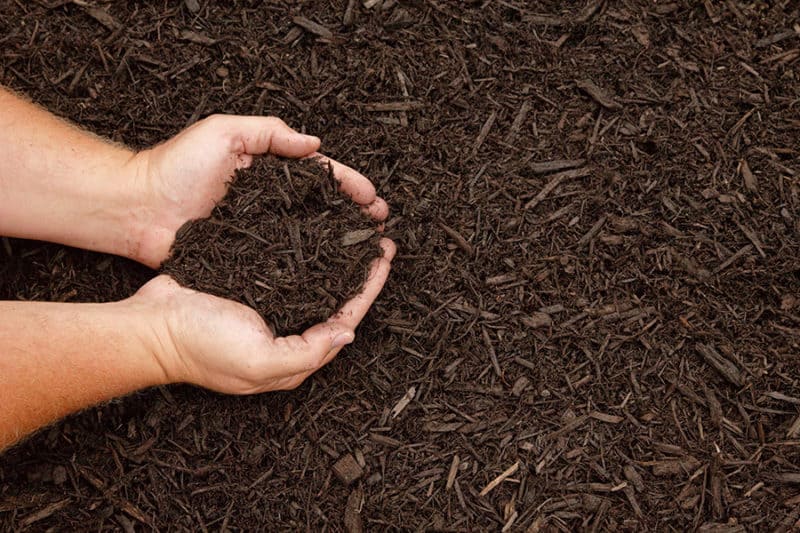
In the spring, you plant all of your seedlings and spread out layers of mulch. During this time of the year, mulch helps to kill off the weeds that are trying to take over your garden beds. You also retain moisture and warm up the soil. When the temperatures spike, mulch helps to keep the soil temperatures lower.
The reasons for winter mulching are different. The main reason to apply winter mulch is to protect your plants from the damaging conditions of winter.
Winter packs a hard punch to your plants with all of the freezing and thawing. Add in the cold temperatures and freezing wind, and you have a recipe that can kill plants in a day.
Winter mulching keeps the ground frozen by blocking out the warmth of the sun. When you apply the mulch, it helps keep a steady temperature that locks the plants in dormancy. It stops new growth that might take place during those pesky and short warming spells.
Another benefit of winter mulching is that it helps to conserve water in the soil. That’s a similar benefit that comes over from the other parts of the year. You can keep your garden beds watered up until the hard frosts with mulch.
The last benefit of winter mulching is that it protects the soil from compaction and erosion. All of that winter rain and snow can wash away soil nutrients and make the soil too compact for root growth.
What to Use for Winter Mulching
When you decide that you want to give winter mulching a try, you have to decide what material you want to use. The ideal choice is anything that is loose and insulating. You will need to remove it in the spring or rake it to the side, so pick something that is easy to handle.
The best practice is to try to emulate natural by using materials that exist in your environment. Take a look around you to see what’s around you. Whatever mulch you decide to use, it needs to be organic and degradable, so that the nutrients can break down into the soil.
Here are some ideas that might work for you.
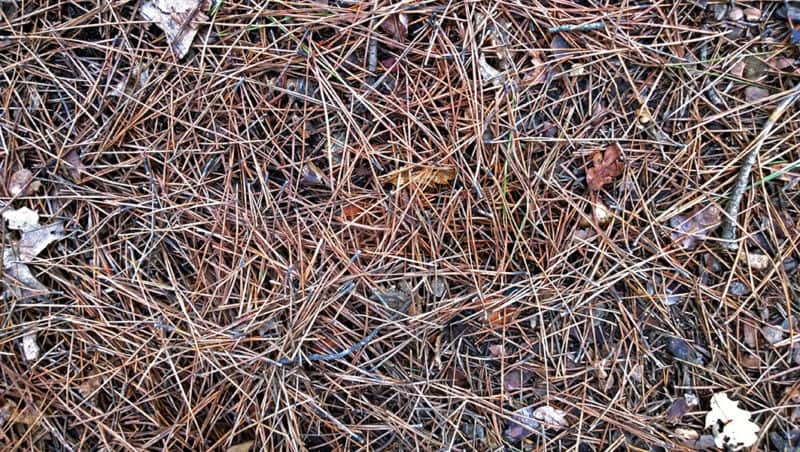
- Shredded mulch
- Pine needles
- Straw
- Shredded leaves
- Cut boughs from pine trees
- Aged compost
- Sawdust
There are some mulches that you need to avoid using. Don’t use anything inorganic or not found in nature like plastic sheeting, rubber pellets, artificially dyed mulch, stone, or crushed pebbles.
When Should You Apply Winter Mulch
When to apply winter mulch depends on what you want to mulch. Timing means a lot when it comes to this task. It might be tempting to start early because it’s on your to-do list, but the temperatures and conditions need to be correct for success.
Perennial Plants
Wait to mulch herbaceous and woody perennials until the first frost takes place, typically in the fall.
You’ll know it’s the right time because the soil starts to harden and plants become dormant. Then, you’ll have the first hard frost when annuals die back, which means temperatures have dropped to a sufficient point that you can winter mulch.
The goal is to stop the ground from thawing once it has frozen. The repeated cycle of freezing and thawing that happens in the early winter causes the ground to expand and contract. That can loosen up the roots and push the plants upward, exposing the crowns and roots to freezing temperature and wind.
That’s why mulching over perennials is so important in the winter, especially for fragile young plants. Not only could it damage or kill your plants, but it could confuse your plants if they experience thawing, causing them begin a cycle of new growth in the winter, which leads to a stressed-out plant.
Annual Crops
You know that winter mulching of perennials is done to stop the ground from unfreezing, but when you mulch annual crops, you want to keep the ground warm and stop it from freezing for as long as possible. The goal is to prolong the harvest season, keeping food on your table for even longer in the winter.
Depending on where you live, this process might allow you to harvest crops all winter long!
You must mulch annual crops before the ground freezes. Many crops handle going into the early weeks of winter with a few layers of insulation to stop the ground from freezing. It’s like a winter jacket over the top.
Several annual crops can handle this strategy, such as:
- Carrots
- Parsnips
- Turnips
- Beets
- Kohlrabi
- Kale
If you want to mulch over annual crops to extend your harvest, you need to cover the plants with 1-2 feet of straw, leaves, or other organic materials. Then, you can toss on a row cover, bed sheet, or a garden blanket.
Fallow Beds
Do you have an unplanted fallow bed that needs to be protected? Fallow beds have bare soil exposed to the elements. That could cause a loss of moisture, erosion, or loss of nutrients.
Covering fallow beds with organic materials protects the soil, helping to reduce erosion, build up the nutrients, and keep moisture where it belongs.
Typically, mulching of fallow beds takes place in the fall before the winter weather begins. You can give lasagna mulching a try – it’s a technique that contributes nutrients back into the soil that those hungry annual crops need in the spring.
Shrub Desiccation
Desiccation is the removal of moisture that can lead to a state of dryness. Some evergreen or semi-evergreen shrubs, such as rhododendrons, can become desiccated by harsh winds that take place in winter.
One way to protect these plants it by wrapping them in burlap or spraying on an anti-desiccant.
Another trick is to fill the spaces between the shrub and burlap with leaves or other mulching materials to act as additional insulation. Then, add 2 to 4 inches of shredded leaves, mulch or compost around the base of the shrubs to conserve the ground moisture. Be sure to keep the material several inches away from the stem. Otherwise, you can invite rodents to your shrubs.
Things to Keep in Mind
Here are a few things to consider when you’re applying winter mulch.
- Apply your mulch on a cloudy day when you know that rain is on its way. That means you won’t have to water your garden that day, saving you a step.
- Always clear the area of large weeds before you apply the mulch. Remove any debris as well.
- Water if it doesn’t rain soon afterward. Wet mulch is weighed down, so it won’t blow away.
When to Remove the Winter Mulch
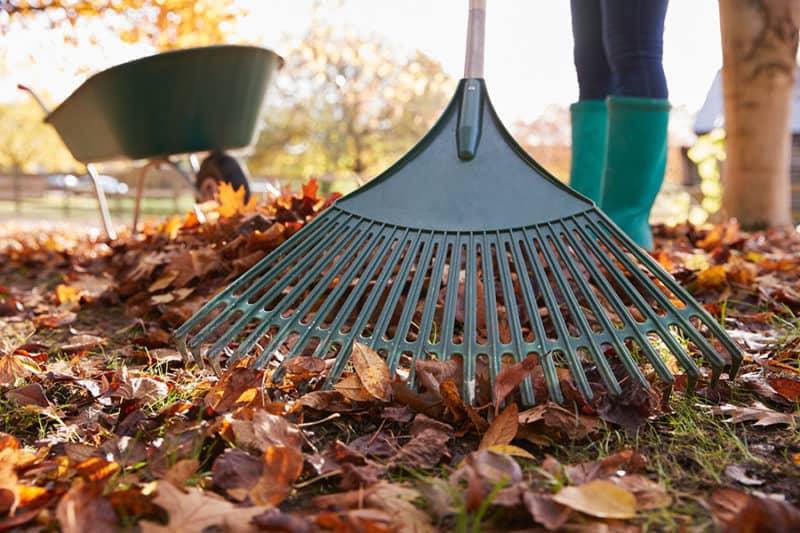
Remember we said that you need to remove your winter mulch before planting your spring crops. It’s best to wait for any and all dangers of a hard frost to pass. Then, you can remove or gradually thin out the mulch.
In your perennial garden beds, remove the mulch completely from the tops of plants to encourage new growth. In your annual bed or fallow beds, the mulch should stay in place to continue to decompose and prevent weeds from taking over. You can rake it to the side when you’re ready to add new young plants.
Embrace Winter Mulching
Winter mulching is a simple task that follows our natural cycle of slowing down in the winter. Many plants go into hibernation during the winter, and having a warm blanket over the top helps protect them from the cold. By adding mulch to our winter beds, we can feel comfortable that they’ll come out even better in the spring.
